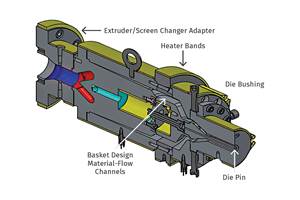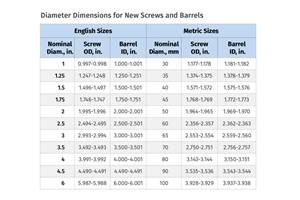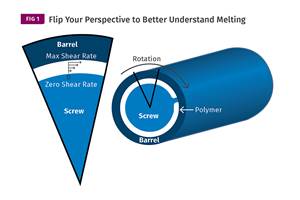PE Film Market Analysis: T-Shirt Bags
It's a huge ´óĎó´«Ă˝ that will grow modestly over the next three years even in the face of environmental obstacles.

Last year, processors consumed about approximately 1.35 billion lb of polyethylene to produce grocery sacks, also known as t-shirt bags. Though ban, taxes and other environmental roadblocks are seemingly never-ending threat, the market should experience modest growth of 1.6% a year through 2017, when PE consumption for T-shirt bags will reach 1.420 billion lb.These are among the conclusions of the most recent study of the PE Film market conducted by ., St. Joseph, Mo.
Plastic bags still face competition from paper bags, as some consumers believe paper makes for a more natural and environmentally safe bag, says Mastio. Truth be told, paper manufacturing pollutes the water, releases dioxininto the atmosphere, contributes to acid rain, and depletes the tree population, the study points out.
Moreover, Mastio states, PE t-shirt bags consume 40% less energy than paper when produced, and generate 80% less solid waste than paper bags. Fewer atmospheric emissions are produced and less waterborne wastes are released with PE t-shirt bag production compared to paper bag production.
Currently, reusable cloth sacks continue to make inroads into this market due to the pressure from several state and city governments. Many states and cities are in the process or have already enacted legislation on single-use, paper and plastic bags that varies from an all-out ban to imposing a tax or bag fee on each bag at the point of sale. As a result, many stores are now selling their own reusable cloth or plastic sacks to consumers, Mastio point outs.
MATERIALS TRENDS
T-shirt bags are made primarily of HMW-HDPE and MMW-HDPE. HMW-HDPE is the resin of choice due to its superior strength in thinner gauges than LLDPE or LDPE. HDPE resins, particularly
UHMW-HDPE and HMW-HDPE grades, maintain the desired strength levels when downgauged, and have very high impact resistance.
LLDPE and LDPE resins are utilized when there is a desire for a strong bag that has improved printing properties, a softer texture, and more surface gloss. The various grades of LLDPE resin utilized included the following: LLDPE-butene, LLDPE-hexene and LLDPE-octene. LDPE-homopolymer resin was also incorporated in the production of t-shirt bags. The cost and appearance are typically higher for LLDPE bags when compared to HDPE bags, and some bag strength is sacrificed. With the small operating margins that most grocery stores experience, HDPE bags are a more feasible economic choice.
TECHNOLOGY TRENDS
T-shirt bags are made via the blown film process. Some 20 or so years ago, most t-shirt bags were single layer. Last year, according to the Mastio report, nearly 72% of t-shirt sacks produced were coextrusions, generally three layer. On average, says Mastio, PE t-shirt bags used 30% less material today than bags made five years ago. Advances in the PE resins used to produce t-shirt bags have reduced material requirements without decreasing bag strength.
MY TWO CENTS
Equipment builders argue that too many processors are making do with older equipment when newer technology will permit them to produce better quality films at higher speeds. One industry source estimates that more than 70% of the 20 billion lb/yr of blown film is currently processed on equipment that’s 10 years old or older. But T-shirt bagmaking is a highly competitive market will razor-thin margins, making big capital equipment investments a big challenging.
That argument aside, if more processors followed the lead of , staving off environmental threats might be a bit less challenging. The firm made a huge commitment in setting up an infrastructure allowing to collect post-consumer film and reprocess it into new bags. Read that story here.

Related Content
How to Select the Right Tooling for Pipe Extrusion
In pipe extrusion, selecting or building a complementary set of tooling often poses challenges due to a range of qualitative factors. Here’s some guidance to help you out.
Read MoreNPE2024 Wrap-Up: Sustainability Dominates Show Floor News
Across all process types, sustainability was a big theme at NPE2024. But there was plenty to see in automation and artificial intelligence as well.
Read MoreTroubleshooting Screw and Barrel Wear in Extrusion
Extruder screws and barrels will wear over time. If you are seeing a reduction in specific rate and higher discharge temperatures, wear is the likely culprit.
Read MoreUnderstanding Melting in Single-Screw Extruders
You can better visualize the melting process by “flipping” the observation point so the barrel appears to be turning clockwise around a stationary screw.
Read MoreRead Next
Beyond Prototypes: 8 Ways the Plastics Industry Is Using 3D Printing
Plastics processors are finding applications for 3D printing around the plant and across the supply chain. Here are 8 examples to look for at NPE2024.
Read MoreMaking the Circular Economy a Reality
Driven by brand owner demands and new worldwide legislation, the entire supply chain is working toward the shift to circularity, with some evidence the circular economy has already begun.
Read More












